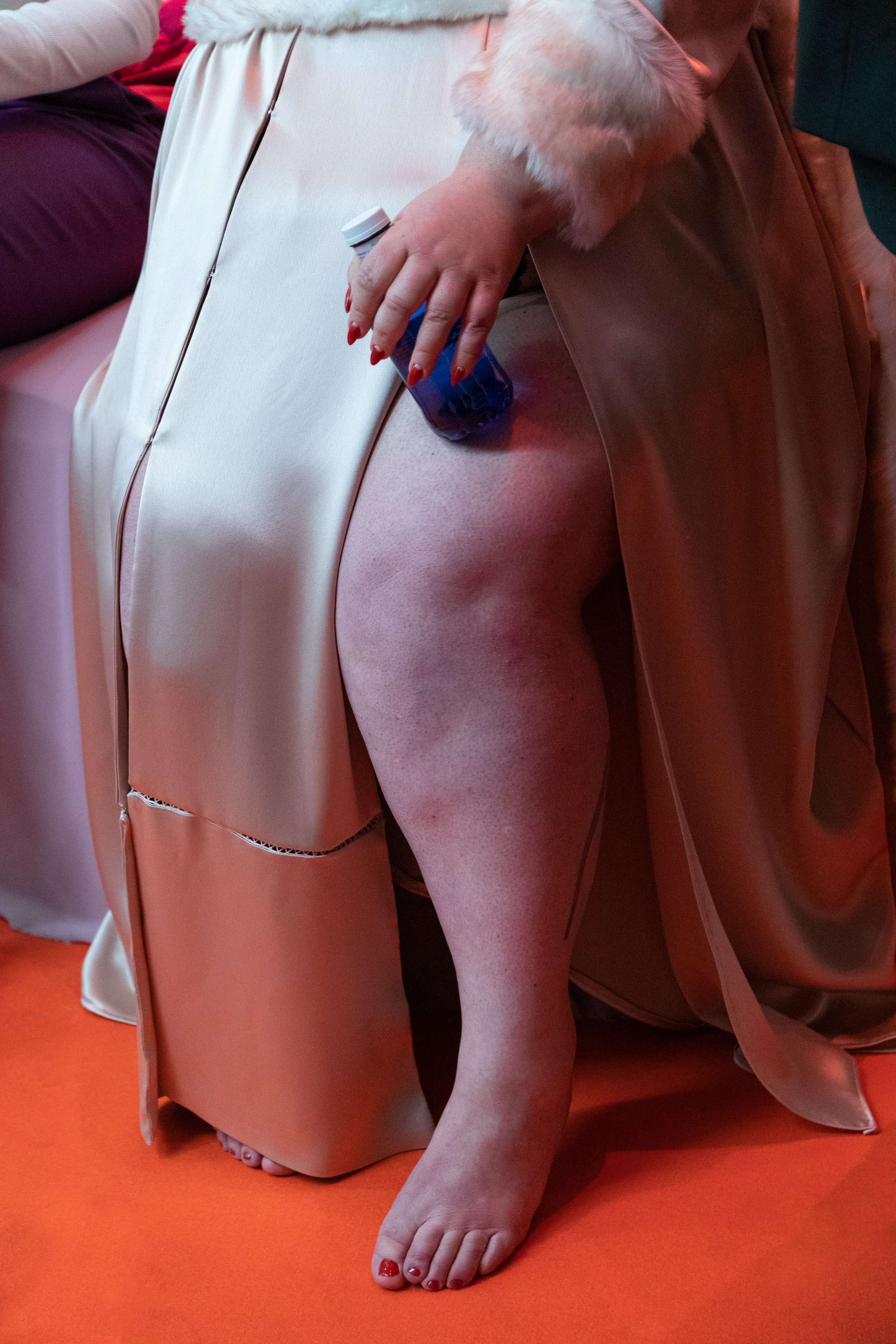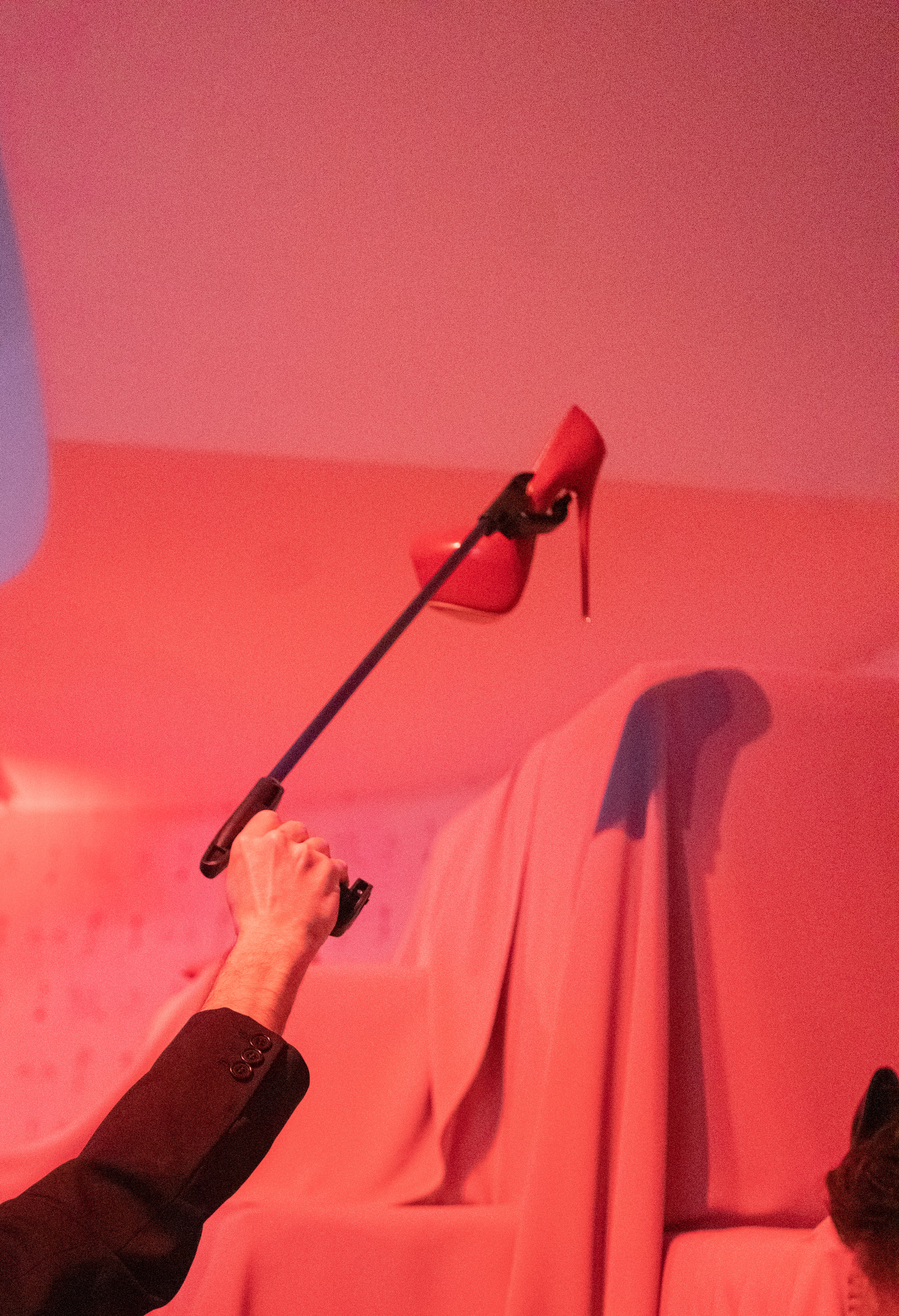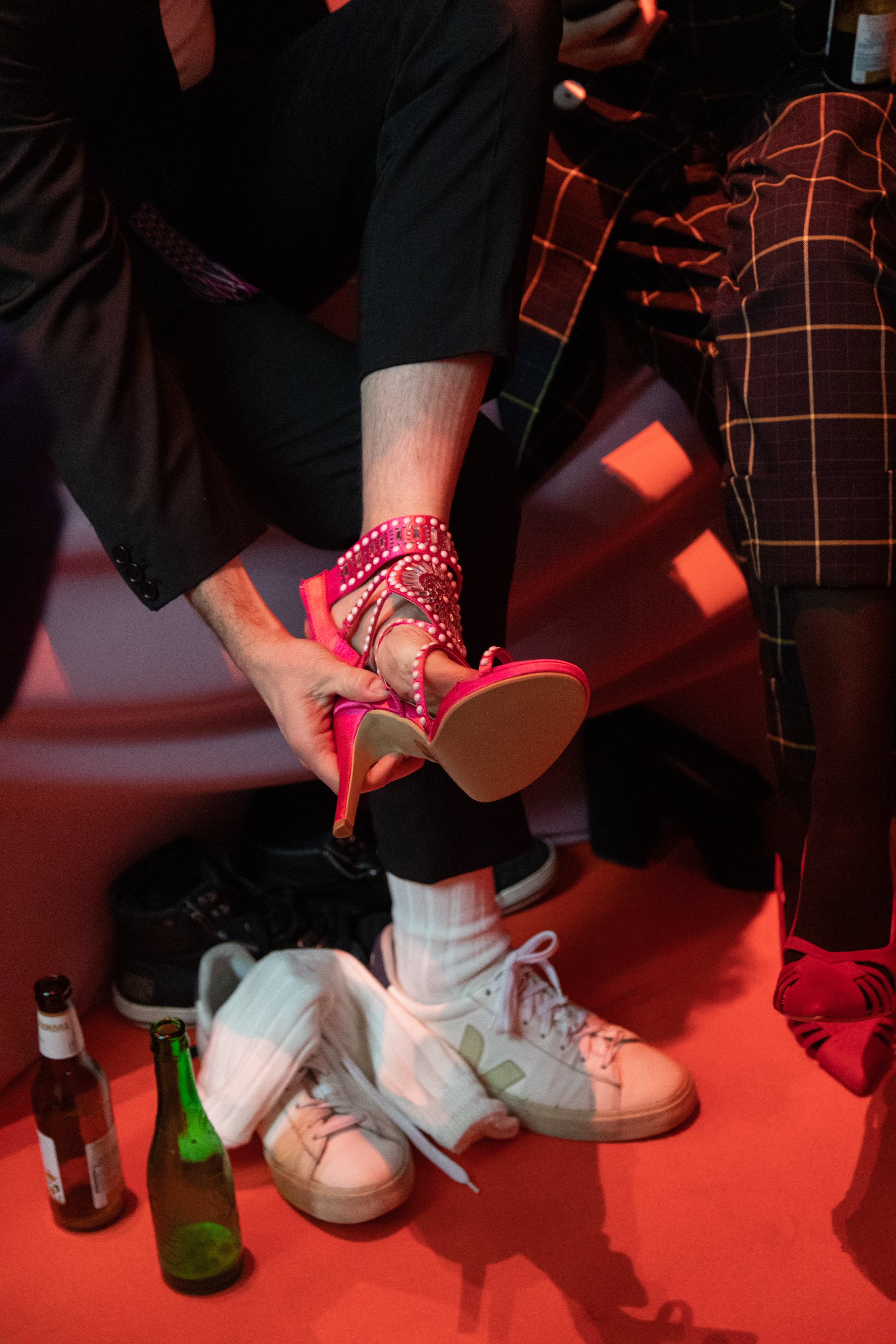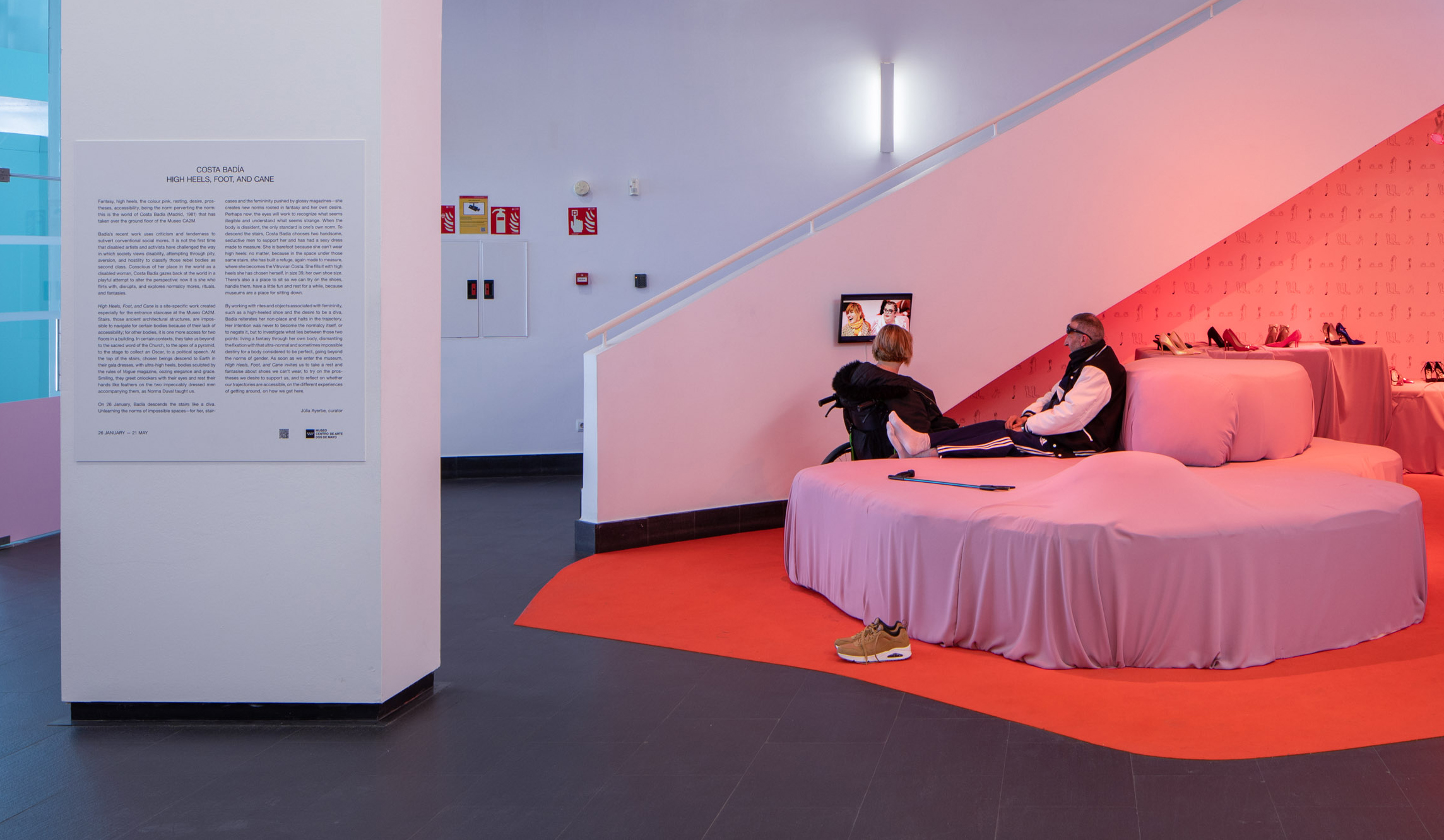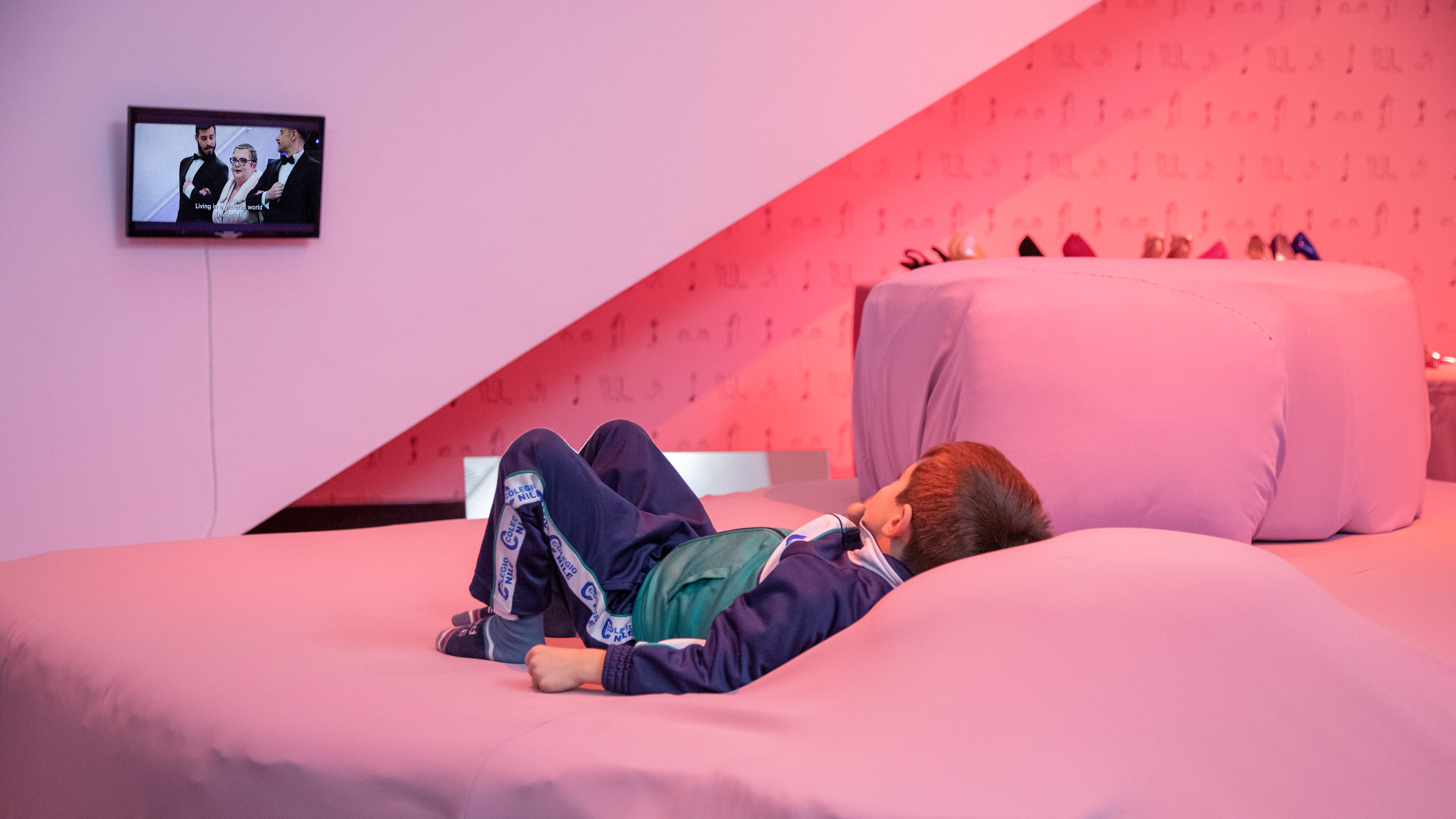>
High heel, foot and cane - Costa Badía
CA2M, Madrid, Spain
2023
This is a space and scenography
design collaboration for the artist Costa Badía and her work "Tacón, pie,
bastón" at the Centro de Arte Dos de Mayo Museum, curated by Julia Ayerbe.
Costa Badía, whose work addresses and emerges from functional diversity, transforms
the museum's staircase through a performative act. With the help of two
assistants and barefoot, she descends the staircase to the rhythm of Madonna's
"Material Girl," redefining this architectural element—typically
exclusive and violent towards many bodies, including her own—as a space of
alternative desires. This act serves as a prelude to an immersive installation:
a shoe rack filled with high-heeled shoes, personally selected by her. This was
a shoe rack-seating area where, through various heights and depths, and in
interaction with clamps/prosthetics, we sought to destabilize the common ways
we relate to space based on our functional abilities and to foster others. At
the same time, it was a space that expanded the ways of sitting and resting for
the regular visitors of the museum and its bathroom, one of the few accessible
to neighborhood residents. It was also a space that reclaimed desire and the
erotic, often denied in the realm of functional diversity. We constructed the
structure using a masonry system of recycled cardboard boxes, initially
developed by Husos for the "Do it Together" project in 2013, and
since then used in subsequent works.
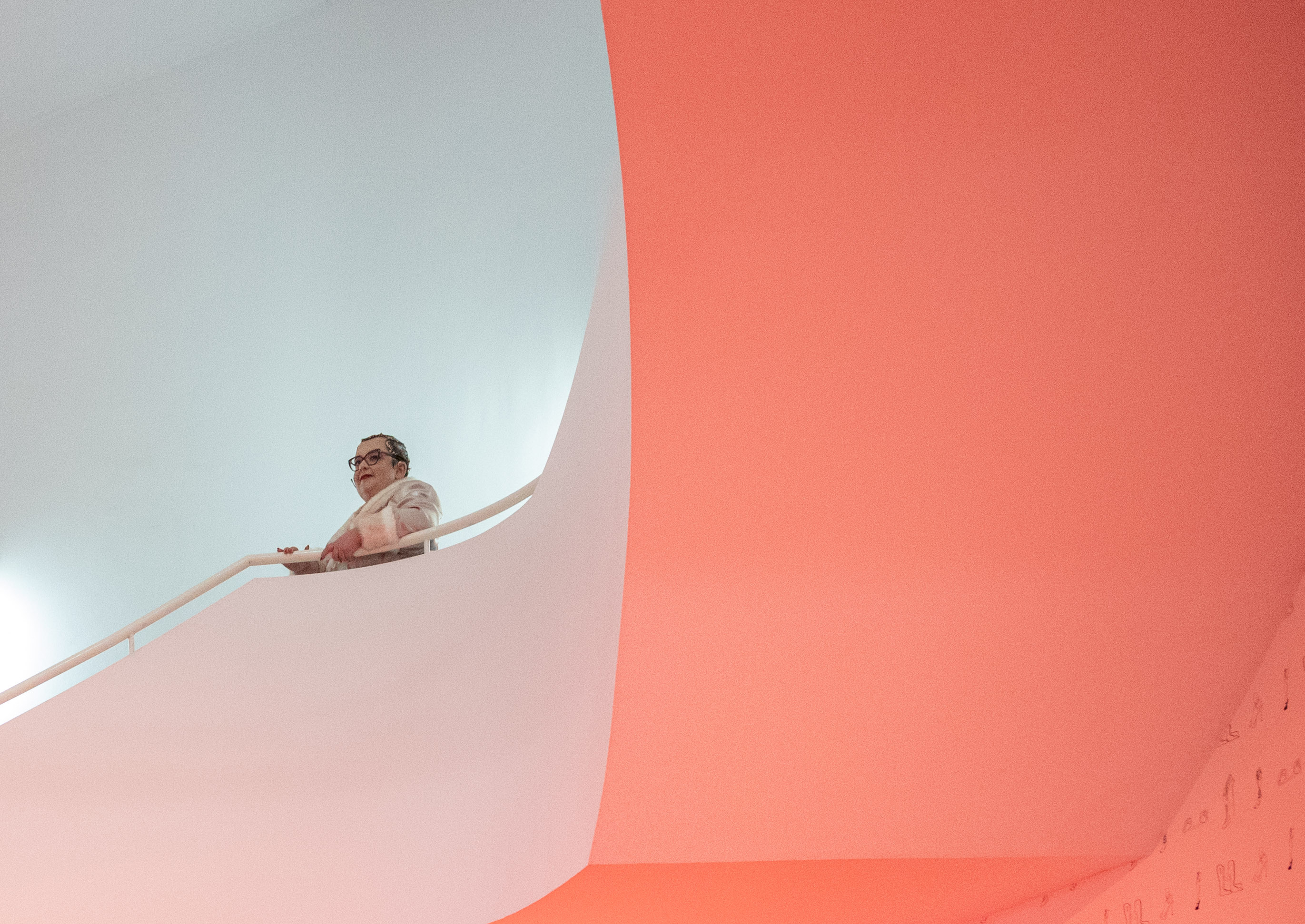
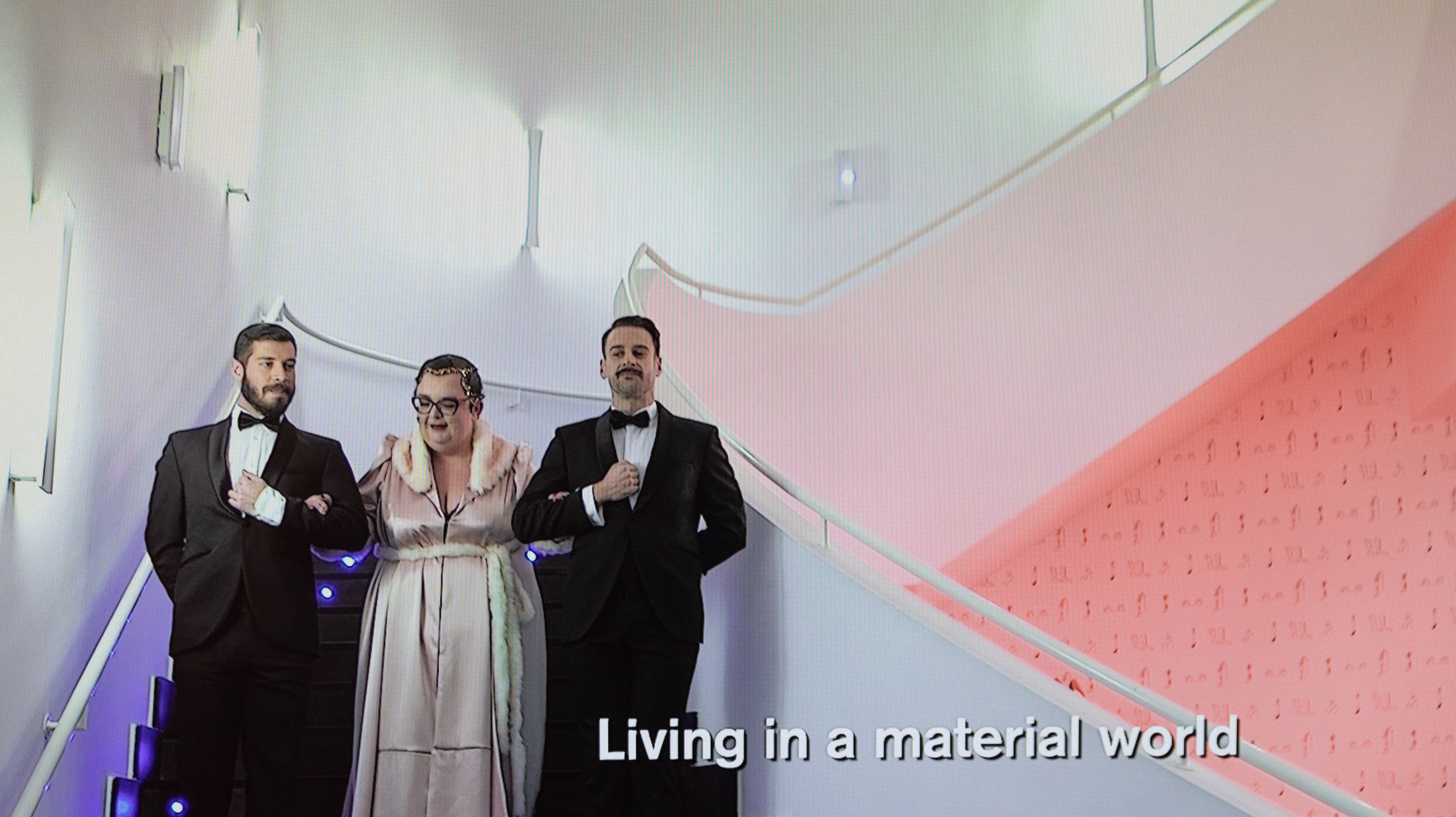
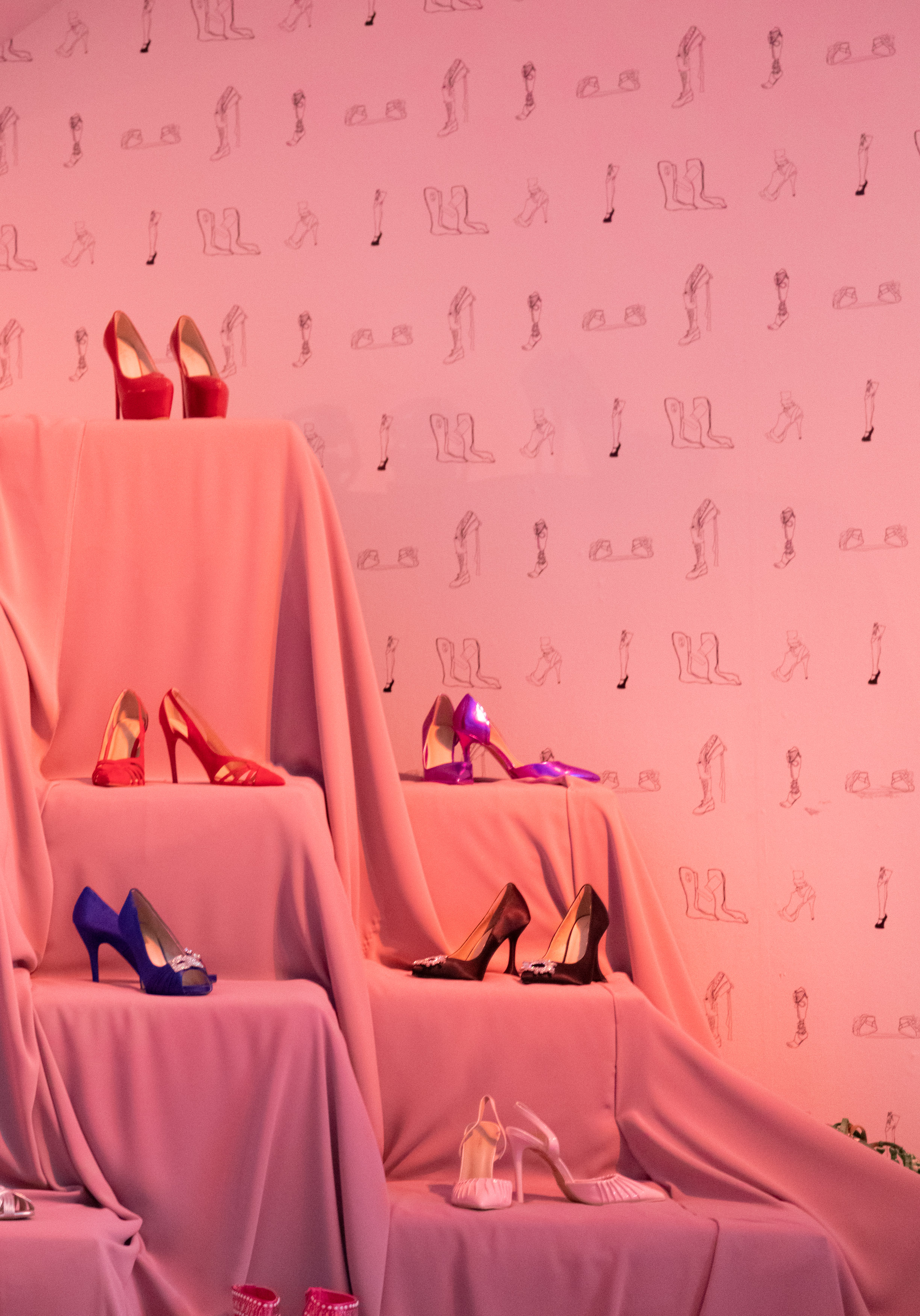
With this installation, we aimed
to explore an architecture that challenges the asymmetries often perpetuated by
built spaces based on our functional capacities. We believe this shoe
rack-seating area reminds us, on one hand, of the asymmetries and conflicts
that often arise between our own desires and the social place of our bodies,
and on the other, that museums can be places to inhabit other ways of being in
the world, for example, by including basic but often overlooked needs, like
sitting.
